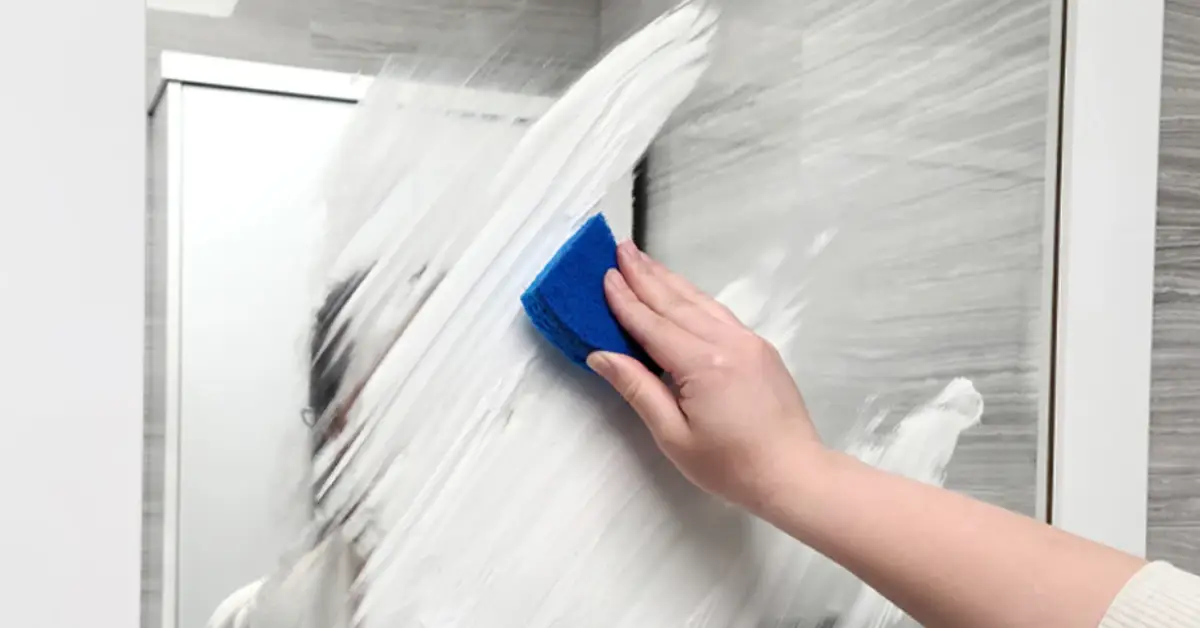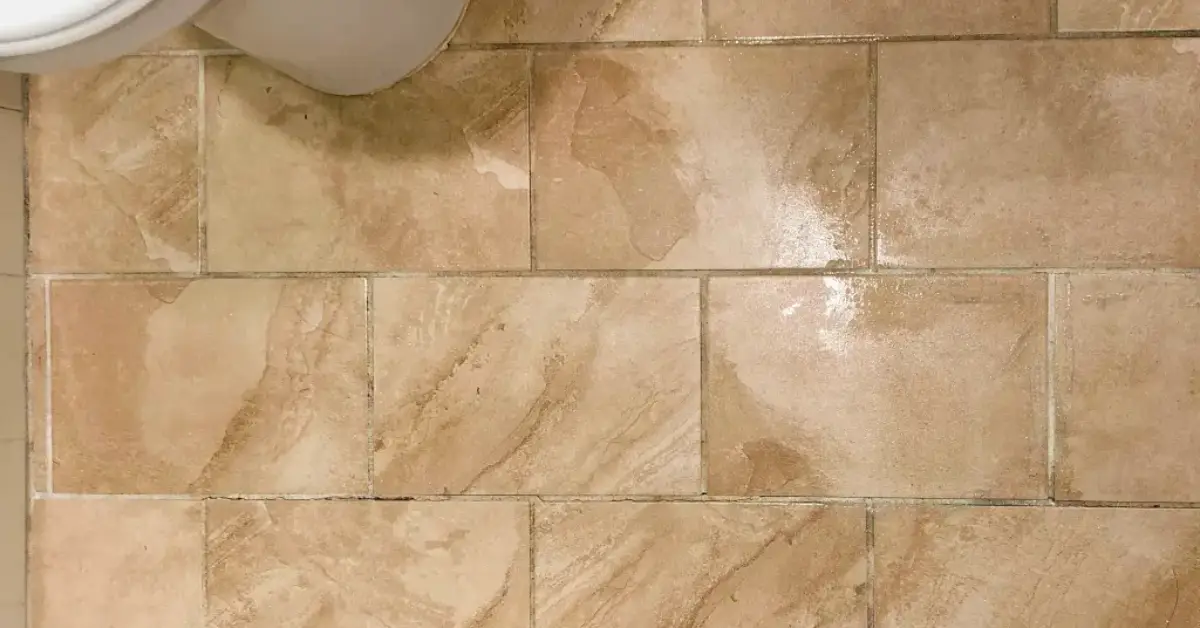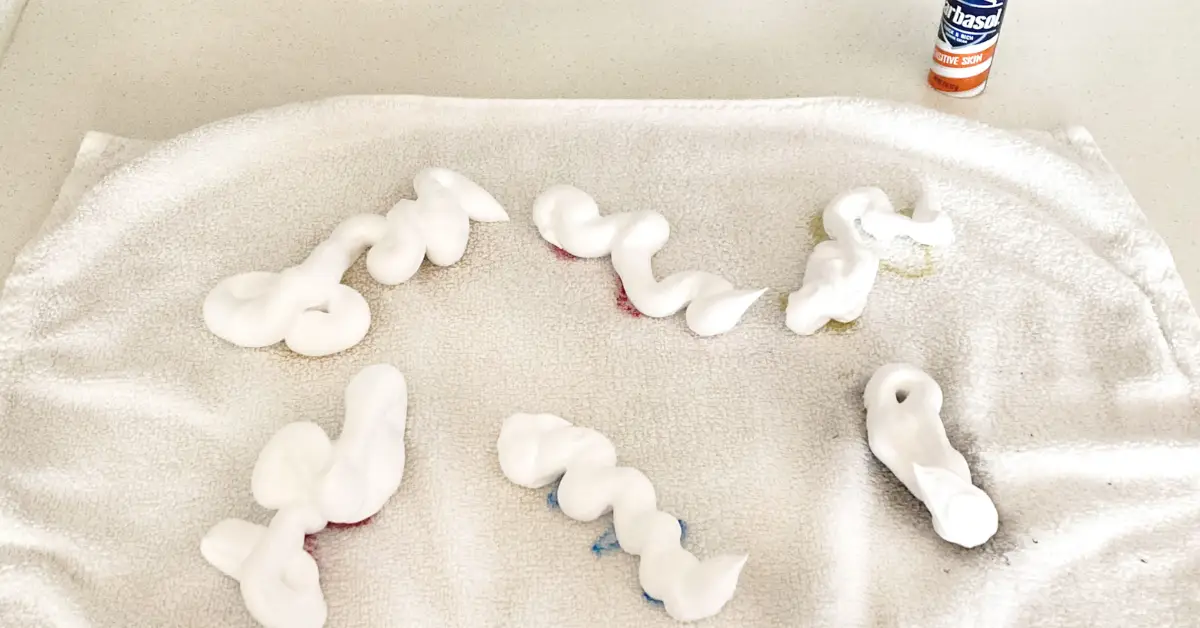6 Easy Cleaning Fixes You Can Do with Just Shaving Cream
I’ll admit it — I didn’t believe the shaving cream cleaning trend at first either. It sounded like one of those internet hacks that goes viral, only to ruin someone’s sofa later. But after seeing homeowners, Reddit users, and even cleaning pros swear by it for everything from foggy mirrors to grimy grout, I had to test it myself.
Regular white shaving cream is basically soap — it’s full of mild surfactants and foaming agents that can lift dirt and residue without scratching delicate surfaces. And when used right, it leaves a clean, streak-free finish most store cleaners can’t match.
Still, not every hack you see online works. I’ve found that a lot of what’s out there skips key details — how long to leave it on, which type of cream to use, or what surfaces to avoid. That’s where this guide is different. You’ll find only the six methods that genuinely deliver results, along with where they fail and how to avoid the common mistakes that make people give up on them.
By the end, you’ll know exactly how to use that can of shaving cream under your sink to clean smarter — not just copy another viral tip. And if you’ve tried one that worked (or didn’t), I’d love to hear about it. What’s the strangest thing you’ve ever cleaned with shaving cream?
Why Shaving Cream Works as a Cleaner (and When It Won’t)
If you’ve ever wondered why on earth shaving cream could replace your cleaning spray, the answer lies in its formula. Most basic foaming shaving creams — the old-school white kind, not the fancy gels — contain the same mild surfactants and emulsifiers found in soap. That means they can cut through grease, soap scum, and grime without scratching or leaving residue.
What makes shaving cream stand out is its texture. Because it foams up, it clings to uneven surfaces — like grout lines, faucet edges, and mirror corners — instead of running off like liquid cleaners. This gives it more time to break down the dirt before you wipe it away, which is exactly what makes it surprisingly effective for everyday cleaning.
But here’s what most viral posts forget to mention: it doesn’t work on everything.
Before you go spraying it on your entire house, keep these quick pointers in mind:
- Stick to white foam, not gel. Gels often contain dyes or extra ingredients that can stain or leave streaks.
- Always do a spot test. Try a small hidden patch first, especially on painted, matte, or porous surfaces.
- Don’t expect miracles. Some stain-removal tests show mixed results — shaving cream can help with light stains, but it’s not a replacement for deep cleaning solutions.
Used correctly, it’s a cheap, gentle, and surprisingly effective cleaner for several household surfaces. Used carelessly, though, it can leave behind cloudy patches or even damage delicate finishes.
So before diving into the fun part — the hacks — remember: treat shaving cream like a clever cleaning tool, not a cure-all.
Hack #1 – Make Mirrors and Glass Sparkle and Resist Fogging

I’ve tried dozens of “mirror hacks,” and most of them left streaks or smudges worse than before. But this one actually works — and it’s probably the simplest.
Here’s how to do it:
- Use plain white foaming shaving cream (avoid gels or colored versions).
- Squeeze out a small amount and spread a thin, even layer over the mirror or glass.
- Let it sit for about 20–30 seconds — just enough time for the surfactants to lift grime.
- Wipe it off using a clean microfiber cloth, buffing until the glass shines.
This technique leaves behind an invisible layer that helps prevent fogging — a trick that many homeowners discovered after trying it in steamy bathrooms. It works because the thin film of cream reduces surface tension, similar to commercial anti-fog sprays. Over time, you’ll notice that even after a hot shower, your mirror stays much clearer.
Best practices to remember:
- Stick to finished, non-tinted glass surfaces. If your mirror has a special coating, test a small area first.
- Don’t overdo it — once a week or every few days is plenty. The effect usually lasts several days before you’ll need to reapply.
- Use a high-quality microfiber cloth — paper towels can leave lint and reduce the anti-fog benefit.
Once you try it, you’ll understand why this trick keeps showing up on home-care blogs like The Spruce.
Hack #2 – Restore Stainless Steel & Chrome Fixtures to Showroom Shine
If your sink fixtures or fridge handles constantly show fingerprints, this one’s for you. Stainless steel and chrome surfaces look stunning when clean — but they’re magnets for water spots and smudges. A small dab of shaving cream can make them shine again in under a minute.
Here’s my go-to method:
- Dampen a soft microfiber cloth slightly (you don’t want it dripping wet).
- Add a pea-sized amount of shaving cream to the cloth.
- Rub the surface gently in small circular motions to lift grime and water marks.
- Buff it dry immediately with another clean cloth for a streak-free finish.
Why it works? The soap-like texture breaks down oil and residue, while the creamy foam acts as a mild polish — leaving behind a thin protective layer that resists new smudges. You’ll see the difference instantly on faucet handles, sinks, and appliance doors.
A few quick cautions:
- Always test a small area if your fixture has a brushed or matte finish.
- Avoid using it on painted metals or powder-coated finishes — it may dull the surface over time.
- Less is more — overusing shaving cream can cause buildup instead of shine.
Once you’ve buffed that faucet to a mirror gleam, you’ll probably never reach for your pricey stainless cleaner again. If you love quick, satisfying transformations like this, you’ll also want to check out 3 Quick Kitchen Cleaning Habits to Adopt Before Bed — it’s full of small routines that make your kitchen shine with almost no effort.
Hack #3 – Tackle Grout, Shower Doors, and Hard-to-Reach Nooks

If you’ve ever spent half a Saturday scrubbing bathroom grout or the edges of your shower door, you know how frustrating those hidden grime spots can be. Traditional cleaners run off too fast, leaving behind soap scum, hard water marks, and that dull, cloudy film. That’s where shaving cream comes in handy — it clings to vertical surfaces and sneaks into the corners your usual spray can’t reach.
Here’s what to do:
- Apply a thick layer of shaving cream directly into grout lines, tile joints, or around toilet bases.
- Let it sit for 5 to 10 minutes so the foam has time to loosen buildup.
- Scrub lightly with an old toothbrush or small grout brush.
- Wipe clean with a damp cloth or rinse with warm water.
- For glass shower doors, spread the foam evenly, wait a few minutes, and then buff until clear.
Why does this work so well? The expanding foam helps lift grime while the mild soap content breaks down soap scum and mineral residue — the same stubborn layer that gives glass that hazy look.
Pro tip: if you’re cleaning an area that tends to grow mildew (like shower corners), follow up with your usual disinfectant spray. Shaving cream helps clean the surface but doesn’t kill mold spores.
And yes, it’s safe for most ceramic tile and glass surfaces — just test a small patch first. You’ll be surprised how fresh your bathroom looks afterward. For a complete home refresh, pair this trick with a few smart habits from How Often Should You Sweep? 7 Simple Cleaning Tips You’re Overlooking — it’ll help you build a routine that keeps every corner spotless without extra effort.
For more on how this works on bathroom surfaces, check House Beautiful — they’ve highlighted how well the foam trick performs in damp areas.
Hack #4 – Spot-Clean Stains on Upholstery, Carpet, Fabric & Suede
Now let’s talk about one of the most debated uses of shaving cream: stain removal. You’ve probably seen people online claiming it removes everything from wine spills to pen marks — but not all of that is true.
Here’s what testing shows:
- Light stains on fabric or upholstery can fade noticeably when treated with shaving cream.
- But deeper or set-in stains (like ink or old coffee) often remain untouched, even after several attempts.
- The key difference? The type of fabric and the amount of foam contact time.
My tested method:
- Apply a small dollop of foam to the stain.
- Let it sit for about 10–20 minutes (no longer, or you’ll risk residue).
- Gently blot with a damp cloth, then wipe away the excess with clean water.
- Let the area air dry before deciding if a second round is needed.
A few notes before you start:
- Always test an inconspicuous area first — especially on bright colors, suede, or velvet.
- Avoid using gels or scented creams, as dyes and additives can worsen discoloration.
- Don’t expect miracles; for heavy-duty stains, you’ll still need a proper cleaner or steam treatment.
Used carefully, though, this hack is perfect for quick fixes — like fresh food marks or small spills — when you don’t want to haul out your whole cleaning kit.
Hack #5 – Use for Quick Cleanups of Painted Walls, Doors & Cabinet Surfaces

Most people don’t realize how much grime quietly builds up on walls, doorframes, and kitchen cabinets — until sunlight hits just right and you see all the fingerprints. The challenge is cleaning these areas without dulling or stripping the paint. That’s where shaving cream works surprisingly well.
Why this matters: Painted surfaces can’t handle harsh chemicals or abrasives. A mild, foamy formula offers just enough cleaning power without damaging the finish.
Here’s how to do it:
- Dampen a microfiber cloth (make sure it’s not dripping).
- Add a small amount of shaving cream directly to the cloth.
- Gently wipe over dirty spots, focusing on areas near handles or light switches.
- Finish by wiping the area with a clean, dry cloth to remove any residue.
Important tips:
- Works best on semi-gloss or satin finishes, which are more moisture-resistant.
- Avoid excessive rubbing or water on matte paint — it may leave dull spots.
- Always spot-test a hidden section first, especially if you have custom paintwork or textured walls.
When done right, this method removes greasy fingerprints and scuffs in seconds — no harsh chemicals, no paint damage. And if your home has hardwood floors that never seem to stay shiny, don’t miss 4 Hardwood Floor Cleaning Blunders That Are Dulling Your Floors Right Now — it reveals common mistakes that could be undoing your hard work.
Hack #6 – Bonus: Unusual but Handy Uses (White Sneakers, Mattress Refresh, Kids’ Crayon Walls)
By now, you’ve seen how shaving cream can transform bathrooms and fixtures — but that’s not all it can do. Some of its best uses are the ones people rarely talk about. These little extras are what make this hack worth sharing.
White Sneakers / Canvas Shoes
If you’ve got a pair of sneakers that lost their shine, shaving cream can help bring them back to life. Apply a thin layer of foam to the surface, use a soft brush or old toothbrush to work it into the fabric, and let it sit for about five minutes. Then, wipe it off with a damp cloth. The mild soap helps lift dirt and brighten the surface without harsh bleach or detergent. Works especially well on white canvas or leather shoes that need a quick refresh.
Mattress Refresh & Odor Control
No one likes a musty mattress. A light layer of shaving cream can help clean surface stains and neutralize odors. Apply a small amount on the spot, let it sit for 10 minutes, and then wipe with a clean, damp cloth. Once it dries, vacuum the area to remove residue. You’ll notice a fresher scent and cleaner feel without soaking your mattress in harsh chemicals.
Kids’ Crayon or Marker Walls
If your walls have turned into your child’s art gallery, don’t panic. Spread a bit of shaving cream over the crayon marks, let it sit for a minute, and wipe with a damp sponge. The foam loosens wax-based colors and leaves the wall clean — just make sure you test on a small area first to ensure your paint finish stays intact.
These aren’t just random TikTok tricks; even cleaning pros have noted how versatile shaving cream can be across multiple surfaces. For example, The Sun featured several of these offbeat uses, showing how one product can simplify multiple cleaning tasks around the house.
Safety, Best Practices & Maintenance Checklist

Before you grab your razor foam and start spraying it everywhere, let’s cover a few basics. Shaving cream is mild, but using it wrong can still cause damage — especially on specialty surfaces.
What to Use / What to Avoid
- Always stick with plain white foaming shaving cream — no dyes, gels, or heavy scents. These extras can stain or leave residue.
- Never mix shaving cream with bleach, vinegar, or acidic cleaners. The combination can irritate skin or produce unwanted reactions.
- Use it in small, manageable areas instead of coating large surfaces all at once.
Materials to Test First
- Suede or untreated leather
- Matte painted walls
- Tinted or coated glass
- Unsealed wood or antique furniture
Always test on a small hidden area first. If it leaves dull patches or discoloration, rinse immediately.
Routine Maintenance vs. Deep Clean
You don’t need to go overboard — just build it into your normal routine:
- Weekly: Quick polish for mirrors and faucets.
- Monthly: Grout and edge cleaning in bathrooms.
- Seasonally: Spot-clean shoes, mattresses, or upholstery.
When NOT to Rely on It
Shaving cream isn’t a disinfectant or a replacement for professional cleaners. Avoid using it on:
- Heavy mold or mildew buildup
- Biohazard stains or pet messes
- Deep or old upholstery stains
When used wisely, it’s an affordable, low-effort way to handle small cleaning wins that make your home look and feel fresher.
Conclusion – Put It into Practice & Maximize Your Cleaning Routine
If you’ve made it this far, you’re probably already looking at that can of shaving cream a little differently — and honestly, you should. Who knew something meant for shaving could double as a glass cleaner, wall refresher, and even sneaker savior?
Here’s what I’d suggest: start small. Pick just one or two of these hacks — maybe the mirror defogger or the grout refresh — and try them this week. You’ll get quick, visible results that’ll make your next cleaning day feel a lot more rewarding.
The fun part is, once you see it work, you’ll start spotting new possibilities all around your home. That’s the real power of simple, smart cleaning — learning to repurpose what you already have and make it work harder for you.
Just remember a few basics: always test on small areas first, stick to plain white shaving foam, and never mix it with harsh chemicals. Beyond that, have fun experimenting — and don’t be afraid to get creative.
I’d love to hear what works best for you. Drop a comment below on Build Like New and share which hack surprised you the most — or even better, your own clever twist on using shaving cream around the house.
And if you found this guide helpful, bookmark it now so you can come back during your next cleaning spree. Because sometimes, the simplest tricks really do make your home feel brand new — one unexpected hack at a time.
Disclaimer: Always test shaving cream on a small, hidden area before full use. Results may vary by surface and product type. Build Like New provides these tips for general informational purposes only — follow manufacturer care instructions and use caution with delicate materials.


